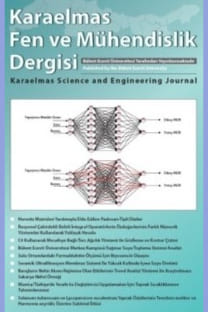Düşük Plastisiteli Bir Kilde Katkı Olarak Çelikhane Curufunun Kullanılması ve Kireç ile Etkileşimi
Çelikhane curufu Basic Oxygen Furnace Slag-BOS çelik üretimi esnasında ortaya çıkan ve üretici fabrikalarda yüksek tonajlı bir atık olarak istiflenen bir ara malzemedir. Bu çalışmada, çelikhane curufunun killi zeminlerin geoteknik özelliklerinin iyileştirilmesinde katkı olarak kullanımı, kireç ile etkileşimi ve en uygun karışım oranı araştırılmış. Bu sayede, killi zeminlerin geoteknik özelliklerinde iyileştirme sağlanırken, yüksek tonajlı endüstriyel bir atığında geri dönüşümü sağlanmış olacaktır. Çalışmada, düşük plastisiteli kil olarak, Adapazarı-Kocaeli illeri arasında bulunan Uzunçiftlik beldesinden temin edilen kil kullanılmıştır. Uzunçiftlik kiline farklı oranlarda BOS ve kireç karıştırılarak hazırlanan numunelere, kimyasal zemin stabilizasyonunda uygulanması gereken deneylerle ilgili olan ASTM D4609 standardına uygun olarak deneyler uygulanmıştır. Deney sonuçlarına göre, Uzunçiftlik kilinin serbest basınç değeri 279 kPa dır ve bu basınç altında %15 oranında birim şekil değiştirme yapmaktadır. Uzunçiftlik kiline ağırlıkça %3.33 oranında BOS eklenmesi halinde, serbest basınç değeri 28 gün sonunda, 960 kPa’a çıkmaktadır. %5 kireç ile hazırlana karışımda ise serbest basınç değeri 2700 kPa ya yükselmektedir. %5 kireç ve %3.33 BOS ile hazırlanan karışım da ise serbest basınç 4000 kPa değerine yükseltmekte ve birim şekil değiştirme oranı %2’lere düşmektedir. Aynı karışım, %6 olan yaş Kaliforniya taşıma oranı CBR değerini 23 kat artırarak %135 değerine yükseltmektedir
Using Steel Slag as Soil Additive and Interaction with Lime in a - Low Plasticity Clay
In this study, the using as an additive of steel slag Basic Oxygen Furnace Slag-BOS was investigated with the aim of improving clayey soils. In this way, while improving geotechnical properties of clayey soils, ensuring a high tonnage industrial waste recycling will be provided. Investigation of effect of BOS on the low plasticity clay, behalf of the examination of interactions with different additives was investigated in combination with powder lime. Samples were reconstituted by adding various percentages by weight of BOS, lime and both of them. The experiments were applied on the samples in according to the ASTM D4609 which about chemical soil stabilization. According to experimental results, at the end of the 28 days, unconfined compression qu value of Uzunçiftlik clay is 350 kPa and its strain is 12%. When %5 lime and %3.33 BOS were added in clay, qu value increases approximately 11 times and takes on the value 4000 kPa and the strain values of the mixture are decrease %2. Same mixture increased approximately 23 times of soaked CBR values, reached from %6 to %135. The results of this study show that, steel slag, currently known as an industrial by-produce, caused by increases on the strength of properties of clays in the desired direction and if it is used with lime, much more effective. So, steel slag can be used as an additive on the low plasticity clayey soil.
___
- ASTM C977-10, 2010. Standard Specification for Quicklime and Hydrated Lime for Soil Stabilization. American Test Methods Standards.
- ASTM D 4609–01, 2001. Standard Guide for Evaluating Effec- tiveness of Admixtures for Soil Stabilization. American Test Methods Standards.
- ASTM D1557-09, 2009. Standard Test Methods for Laboratory Compaction Characteristics of Soil Modified Effort. Ameri- can Test Methods Standards.
- ASTM D1883-07, 2006. Standard Test Method for CBR (Califor- nia Bearing Ratio) of Laboratory-Compacted Soils. American Test Methods Standards.
- ASTM D2166-06, 2006. Standard Test Method for Unconfined Compressive Strength of Cohesive Soil. American Test Met- hods Standards.
- Wild S., Kinuthia JM., Jones GI., Higgins DD. 1998. Effects of partial substitution of lime ground granulated blast furnace slag GGBS on the strength properties of lime stabilized sulphate-bearing clay soils. Eng. Geol., 51(1): 37-53.
- Wroth, CP., Wood, DM. 1978. The correlation of index proper- ties with some basic engineering properties of soils. Canad. Geotech. J., 15(2): 137- 44.
